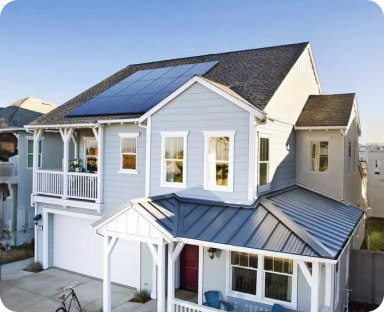We’re less than one month away from the Summer Solstice! The days are getting longer, the weather’s getting warmer, and we’re seeing more and more hours of daylight. The Summer Solstice is the longest day of the year, and marks the beginning of summer at last!
To celebrate, we’re having a Summer Solstice Solar Special! Refer your friends to EmPower Solar, and once their installation begins, you’ll receive $400 from EmPower Solar. It’s our way of saying “thank you” for spreading the word about solar power and helping more Long Island & NYC residents switch to clean, reliable energy.
So, what is the solstice anyway? First, it would probably be helpful to brush up on our astronomy, and think about the Earth’s trip around the Sun. It takes the Earth 365 days to travel all the way around the Sun, marking one full year. During this time, the Earth also “wobbles” on its central axis, so that half of the year, the top-half of the Earth leans closer to the Sun, and the other half of the year, the bottom-half of the Earth leans closer to the Sun. The top-half and bottom-half of the Earth are known as hemispheres. Here in North America, we’re a part of the northern hemisphere, along with Europe and much of Asia.
The seasons are due to the Earth’s wobble on its central axis. The wobble happens gradually over the course of one year, and affects the northern and southern hemispheres in opposite ways. Whichever hemisphere is leaning closer to the sun is experiencing spring and summer, and whichever hemisphere is leaning further away from the sun is experiencing fall and winter. So, our hemisphere’s warmest months (about March through September) are the southern hemisphere’s coldest months, and vice versa.
In this image, we can see how our seasons change by looking at the shadow over North America. The shadow changes as the Earth wobbles on its central axis, and that 23.5˚ angle changes. Moving counter-clockwise from March 21st, we see our Spring (March), Summer (June), Fall (September), and Winter (December).
The wobble also makes the length of sunlight hours change over the course of the year. You’ve probably noticed that there are less hours of daylight in the winter, and more hours of daylight in the summer. Well, as the Earth tilts closer to the Sun, the days get longer.
At the Summer Solstice, the Sun will make its highest arching path across the sky, and the Earth will receive the most hours of daylight all year! And although we certainly don’t want to think about this now (it’s finally getting warm), the days will gradually get shorter starting the day after the Solstice, and the sun will rise lower in the sky until we reach Winter Solstice – when the Sun reaches its lowers arc in the sky.
Luckily, we are still a full seven months away from the Winter Solstice, and have plenty of sunlight and summer to enjoy! For now until June 21st (the Summer Solstice), receive $400 each time a friend you refer goes solar with EmPower Solar. For those readers already installed with solar, enjoy the longest day of the year with the most solar exposure!
Get an estimate for solar and claim your energy independence.

Get an estimate for solar and claim your energy independence.
About the Author
EmPower Solar develops, engineers, installs, and services solar and battery systems for residential and commercial clients. Since 2003, EmPower Solar has empowered thousands of New York homeowners and businesses with 47 megawatts of distributed solar. Its vision is to create a new energy paradigm powered by clean, renewable energy for a more prosperous, healthy, and civil world. The company culture is defined by the EmPowering Way, which results in consistent 5-star customer service reviews. For more information visit empower-solar.com.